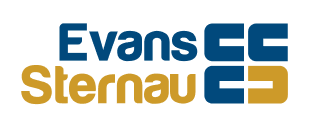Tax Differences Between C Corporations and S Corporations: Choosing the Right Entity Structure
Evans Sternau CPA provides valuable information on how to decide on the right tax structure for your business.
Choosing the appropriate entity structure for your business is a critical decision that impacts not only legal and operational aspects but also taxation. Two common types of corporations are C corporations and S corporations, each with distinct tax implications. In this blog post, we will explore the tax differences between C corporations and S corporations, helping you understand the key considerations when choosing the most advantageous entity structure for your business.
1. Taxation of C Corporations
C corporations are separate legal entities that pay taxes at the corporate level. Key tax characteristics include:
– Double Taxation: C corporations are subject to double taxation, where profits are taxed at the corporate level, and any distributed dividends are taxed again at the individual shareholder level. This can result in higher overall tax liability.
– Corporate Tax Rates: C corporations are subject to a flat corporate tax rate, which is currently 21% (as of 2021). The advantage of this flat rate is that it can be lower than the individual income tax rates applicable to S corporation shareholders.
– Accumulated Earnings: C corporations can accumulate earnings and profits within the company, providing potential tax advantages. However, caution must be exercised to avoid excessive accumulation, as it may trigger additional taxes.
2. Taxation of S Corporations
S corporations are pass-through entities, meaning that profits and losses flow through to the shareholders’ individual tax returns. Key tax characteristics include:
– Pass-Through Taxation: S corporations do not pay federal income tax at the entity level. Instead, profits and losses are passed through to the shareholders, who report them on their individual tax returns. This avoids double taxation.
– Shareholder Tax Rates: Shareholders of S corporations pay taxes at their individual income tax rates, which can be advantageous if the shareholders’ tax rates are lower than the corporate tax rates applicable to C corporations.
– Limited Loss Deductions: Shareholders of S corporations can deduct their share of losses up to their basis in the company. Losses that exceed the shareholder’s basis can be carried forward to offset future income.
Choosing the Right Entity Structure
When deciding between a C corporation and an S corporation, several factors should be considered, including:
- Tax Rates: Assess the current and projected corporate tax rates versus individual tax rates to determine the tax advantages of each entity structure.
- Distribution of Profits: Consider whether you prefer to retain earnings within the company (C corporation) or distribute profits to shareholders (S corporation) to optimize personal cash flow and tax planning.
- Shareholder Limitations: S corporations have restrictions on the number and type of shareholders, including limitations on ownership by non-U.S. residents and certain entities. Evaluate whether these limitations align with your business objectives.
- Compliance and Administrative Burden: Understand the administrative and compliance requirements associated with each entity structure, including record-keeping, reporting, and ongoing costs.
- Future Plans: Consider future growth, financing options, and exit strategies. The choice of entity structure may impact these factors and should align with long-term business goals.
Seek Professional Advice
Selecting the appropriate entity structure for your business is a complex decision with lasting implications. It is advisable to consult with tax professionals, accountants, or business advisors who can provide personalized guidance based on your specific circumstances. They can assess your goals, evaluate tax implications, and help you make an informed choice that optimizes tax efficiency and aligns with your overall business strategy.
Understanding the tax differences between C corporations and S corporations is crucial when choosing the right entity structure for your business. C corporations face double taxation but benefit from lower corporate tax rates and broader deductibility of certain expenses. S corporations offer pass-through taxation, allowing profits and losses to flow through to shareholders’ individual tax returns. Carefully consider factors such as tax rates, profit distribution preferences, shareholder limitations, compliance burdens, and future plans when making your decision. Seeking professional advice will ensure that you make an informed choice that optimizes tax advantages and supports your long-term business objectives.
ABOUT EVANS STERNAU CPA LLC
Evans Sternau CPA is seeking reform in an industry where responsiveness and availability are the exceptions – not the norm.
Our global network of committed CPAs and accountants places proactive thinking at the forefront of our work. With robust service offerings and client support strategies, we are always searching for opportunities to serve your best interests.
While our philosophy is rooted in tried and trusted methods, our execution surpasses the norm and redefines the standard.
Evans Sternau CPA provides proactive tax, accounting, and advisory services for business owners, entrepreneurs and individuals with complex tax challenges. Evans Sternau CPA is for those that want year round support, not just during tax season.


